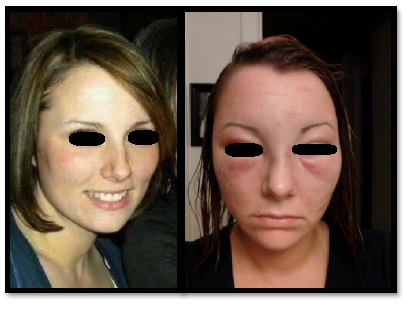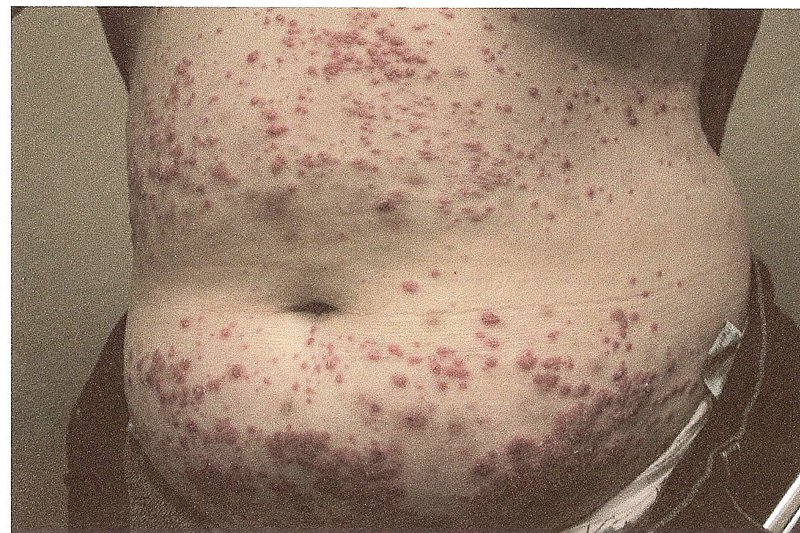CORRECT DIAGNOSIS:
Granular Parakeratosis
DISCUSSION:
Granular parakeratosis is a rare, benign, self limited, skin condition that affects males and females of all ages equally with no racial predilection. The first case of GP, in 1991, was present in the axilla, so the condition was initially termed axillary granular parakeratosis. Since then studies have shown GP in other skin folds so the definition has expanded and is now just called granular parakeratosis. Etiology of GP was initially thought to be secondary to an external irritant or contact allergy, (specifically deodorant), a possible defense mechanism, but many cases show presence of GP without use of an irritant, in non-intertriginous areas, and unilaterally. The other line of thought was a disorder of cornification due to improvement with isotretinoin. General consensus is that there is a disorder of cornification from stratum granulosum layer to stratum corneum layer. Speculation that this is due to inability to process profillagrin to fillagrin extrapolated from electron microscopy studies. With failure to degrade keratohylin granules and aggregate keratin filaments.
TREATMENT:
Due to unknown origins and spontaneous remission, there is no exact effective treatment method.
Prior treatments have included topical and systemic steroids, retinoids, calcipotriene, antibiotics, antifungals. Simple discontinuation of topical applications have proven effective. This patient was prescribed Desonide cream qAM and Tretinoin 0.05% cream qHS, but this was never applied as 90% of lesion had resolved after one month of discontinuation of deodorant and talcum powder.
REFERENCES:
1. Ding CY, Liu H, Khachemoune A. Granular parakeratosis: A Comprehensive Review and a Critical Reappraisal. 2015 Dec;16(6):495-500.
2. Northcutt AD, Nelson DM, Tschen JA. Axillary granular parakeratosis. J Am Acad Dermatol. 1991; 24: 541-4.
3. Metze D, Ru ̈tten A. Granular parakeratosis—a unique acquired disorder of keratinization. J Cutan Pathol. 1999;26:339–52.
4. Mehregan DA, Thomas JE, Mehregan DR. Intertriginous granular parakeratosis. J Am Acad Dermatol. 1998; 59: 495-496.
5. Uraga V, Lubkov A, Moran A, Garces JC, Uraga E. Granular parakeratosis: report of 2 Ecuadorian cases and review of the literature. Our Dermatol Online. 2013;4:322–4.
6. Rodriguez G. Axillary granular parakeratosis. Biomedica. 2002; 22:519-23.
7. Samrao A, Reis M, Niedt G, Rudikoff D. Granular Parakeratosis: Response to Calcipotriene and Brief Review of Current Therapeutic Options
8. LG Webster, NS Resnik, GF WebsterAxillary granular parakeratosis: response to isotretinoin. J Am Acad Dermatol, 37 (1997), pp. 789-790




